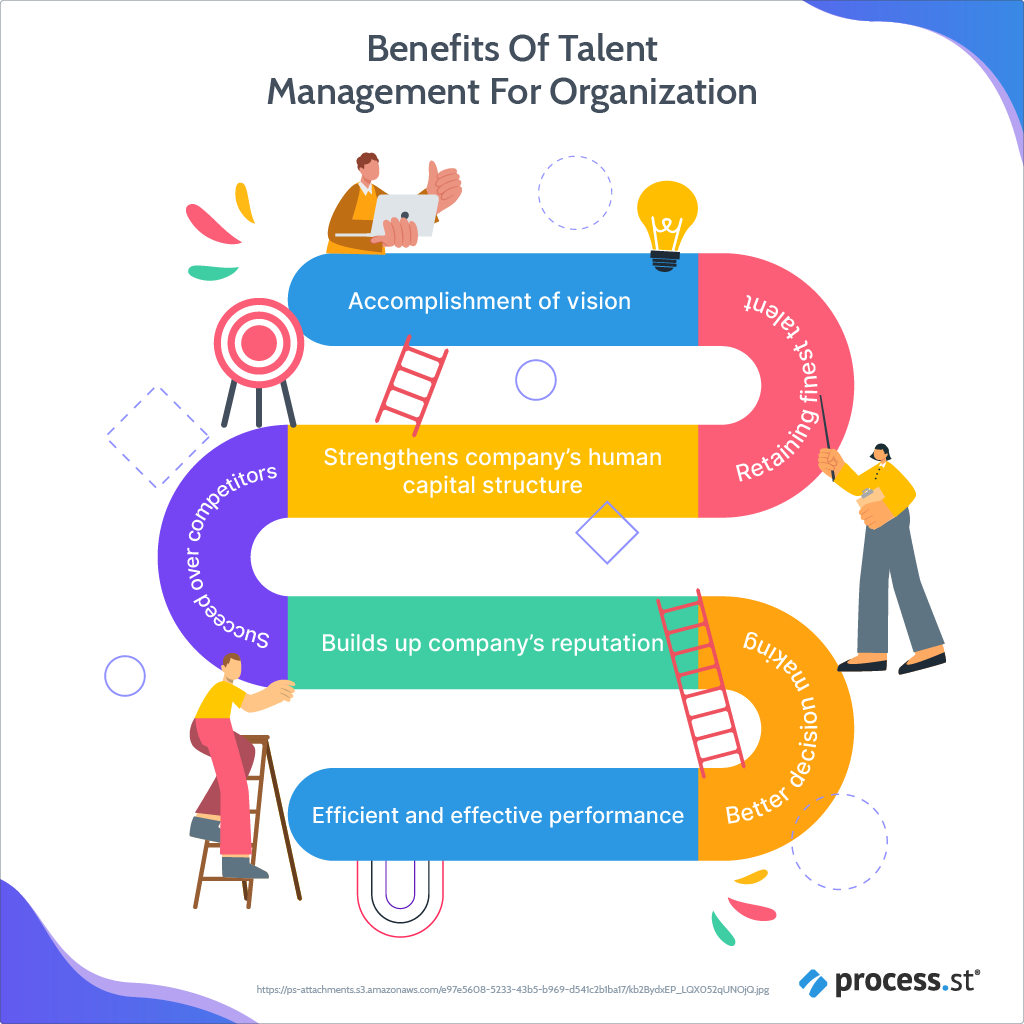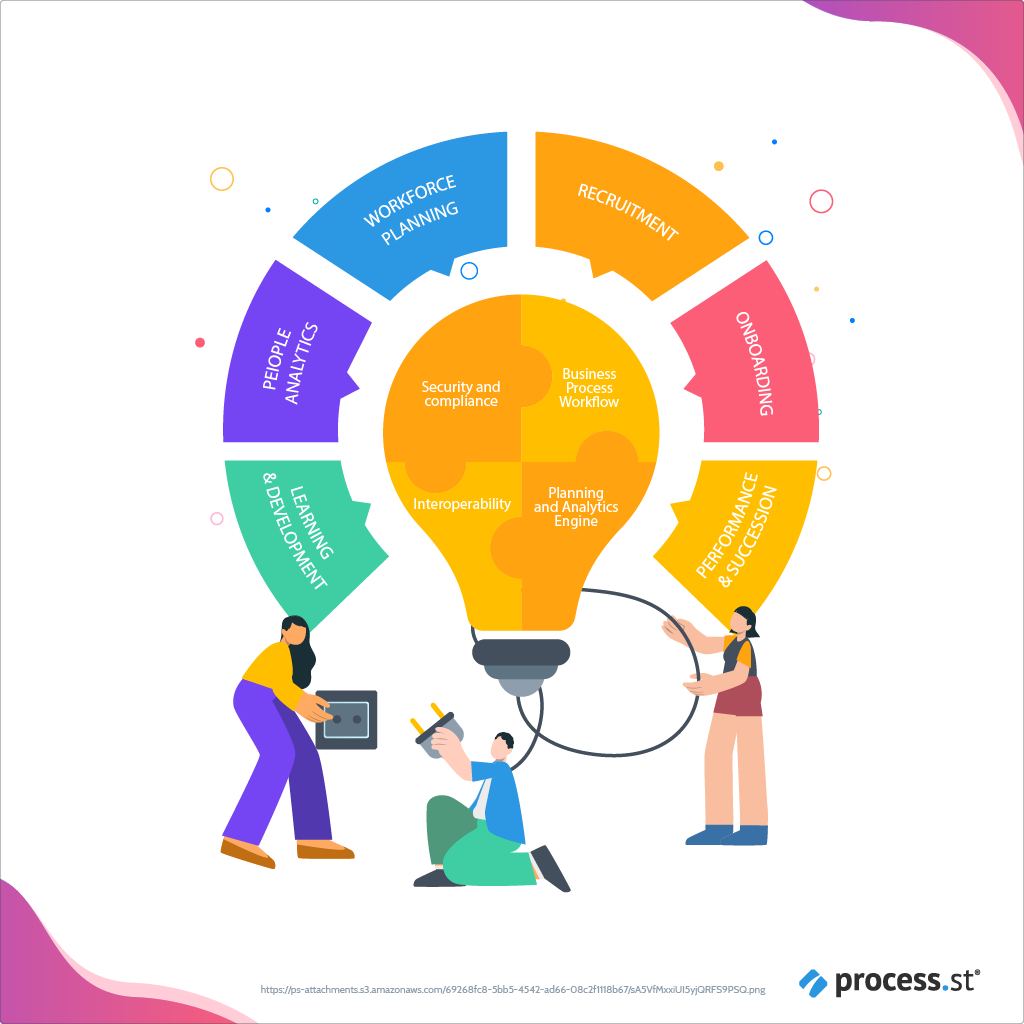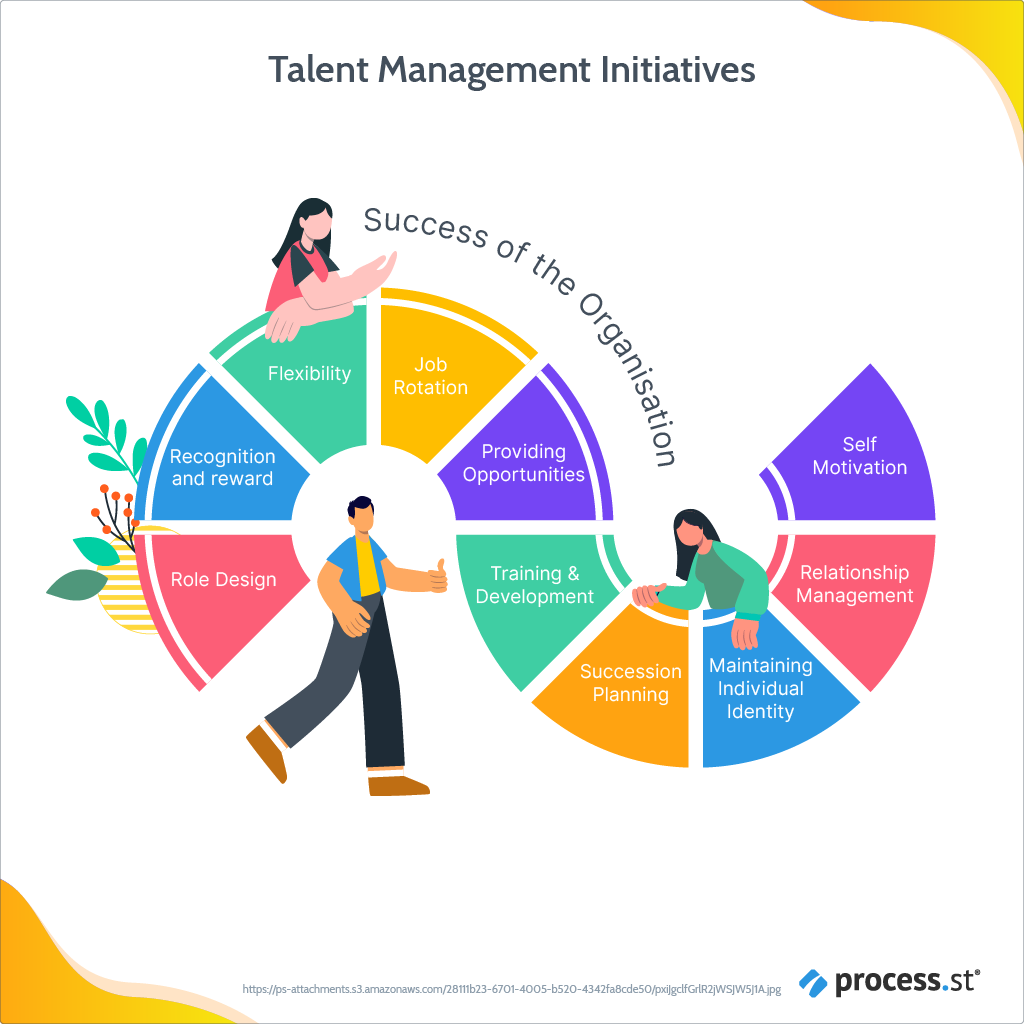 Frank Hamilton is a blogger and translator from Manchester. He is a professional writing expert in topics like blogging, digital marketing, and self-education. He also loves traveling and speaks Spanish, French, German and English.
Frank Hamilton is a blogger and translator from Manchester. He is a professional writing expert in topics like blogging, digital marketing, and self-education. He also loves traveling and speaks Spanish, French, German and English.
It wasn’t until 1997 that the term talent management was properly explained. Since then, the practices associated with it have evolved and continue to do so each day.
In this Process Street article, I’ll be taking a look at talent management, its strategies, why it is so important, and how you can implement it in your own company.
As daunting as such management might seem, I’ve also recommended some comprehensive templates to help make implementing your talent management strategy easier.
This article has been split into the below subheadings:
- What is talent management
- The benefits of a talent management system
- How to optimize talent development with a talent management system
- How you can use Process Street in your talent management strategy
What is talent management?
Talent management is a business strategy that works to obtain a maximum return from the company’s human capital.
Performance management vs. talent management
Performance management is often confused with talent management, meaning the terminology is often used interchangeably. Despite the two disciplines being related, they have completely different goals.
The goal of performance management is to track employee performance in relation to individually established goals and key performance indicators.
Talent management, on the other hand, takes into account the business side of people management and works with long-term goals. However, it’s true that performance management lies at the core of talent management, along with the other principles like:
- Applicant tracking systems
- Performance management
- Employee onboarding software
- Learning and development
- Compensation management
- Succession planning
An effective talent management strategy uses all of the above to the advantage of a company, giving it a competitive edge.
The benefits of having a talent management system
 A talent management (TM) system is an integrated software tool that addresses all elements of TM. These are compensation management, learning and development, performance management, and recruitment. Your company can reap many benefits when this system is well-equipped to manage such areas.
A talent management (TM) system is an integrated software tool that addresses all elements of TM. These are compensation management, learning and development, performance management, and recruitment. Your company can reap many benefits when this system is well-equipped to manage such areas.
Recruiting process
Applicant tracking systems can help you manage leadership and candidate communications, organize information and allow recruiters to collaborate better. This is essential as 60% of candidates think better communication during the application process makes a more positive impression.
Onboarding process
Employee onboarding solutions can increase productivity, decrease turnover, and ease new hires into their role. Effective onboarding programs increase retention by 25% and improve employee performance by 11%.
Performance management process
Performance management systems can increase transparency and collaboration, make employees feel more connected to their job, help drive succession planning, and boost the effectiveness and frequency of feedback. With 86% of executives and employees citing the lack of collaboration and proper communication as the cause for workplace failures, these systems can be a lifesaver for your organization at some point.
How to optimize talent development with a talent management system
 By this point, you are probably certain that you definitely need a talent management system in place. You need a strong strategy to develop the talent of your employees. Below are 9 tips, as mentioned on the Greenhouse blog, on how to create a successful talent management system for your company.
By this point, you are probably certain that you definitely need a talent management system in place. You need a strong strategy to develop the talent of your employees. Below are 9 tips, as mentioned on the Greenhouse blog, on how to create a successful talent management system for your company.
Tip #1: Name your organizational goals
This is a simple rule, yet it is often forgotten. Before planning your talent management strategy, make sure you know your organizational goals, values, and where you are heading. These will influence your decisions as you try to stick to what you stand for. It’s easier to find talent that fits with these organizational goals once they’ve been clearly defined.
While most candidates will fit the requirements listed in your job listing, not all of them will fit with your company’s culture. When assessing potential candidates, check their tone of voice and the language they use. They should be passionate about what your company does and share your company’s values.
At Process Street we recognize the significance of company culture. We believe that diversity and inclusion is an excellent place to start for your business culture to blossom. This is why we have created these free workflows to support you in defining and creating diverse and inclusive values.
- Diversity Questions Survey
- Diversity Hiring Process
- Employee Complaint Procedure
- Diversity Training Process
- Code of Conduct Policy Adherence Process
Tip #2: Translate goals into human assets
Even though most of the factors – including performance and potential – are measured in numbers and statistics, HR managers must never forget the human element. You must learn to view goals as a measurement of human assets.
For example, some jobs may require more people than you initially expected them to. Re-evaluation of your choices is needed for you to think everything through before making the final decision. Of course, you are not obligated to do it all on your own, so get the current department managers and team members to also have a say.
Tip #3: Identify future obstacles
You need to identify future obstacles before they become a problem. It is always better to save yourself a headache and have a plan B, C, or D ready in case plan A fails.
There will be challenges in the way, which you must be ready to face. If you can detect them beforehand, it will make your life easier. Address them right here and now, to make sure they are dealt with properly.
Tip #4: Adapt to international employees
If you are planning to hire people on an international scale, or you have different departments based globally, it might be a good idea to adapt your strategy for international employees.
This will include anything from translating documents to other languages (try online translation services such as The Word Point), to making sure you have a translator at your meetings. Of course, English is the language of business, and so qualified employees will often be fluent.
Tip #5: Hire the right people
Hiring the right people is very important for the well-being of your company. But before you can hire the right person, you need to advertise the role to the right people. That’s where the power of job descriptions comes in.
Simply including a ton of buzzwords will not work well to attract the talent you are looking for. You are representing your company, so the success of your company depends on you and that job listing.
Make the job title clear and on point. Include such things as the overall duties and necessary skills. Don’t forget about the work relationships, tools, equipment used, skills needed and benefits provided.
If you need some help writing a perfect job description, why not try our Job Description Template:
You can edit the above template so that it caters specifically to you and your job description. Below are some job-specific templates we have ready for you to jump in right away.
- Accountant Job Description Template
- Editor Job Description Template
- Graphic Designer Job Description Template
- HR Manager Job Description Template
- Web Developer Job Description Template
Tip #6: Invest in current employees
A good alternative to hiring someone outside is to look on the inside of your company. Internal hiring is a great option, saving you money as external candidates usually expect 18-20% more in salary on average. This may save you millions in some situations.
Moreover, internal candidates are the people who you can trust thanks to your experience with them. You can also be sure that they fit into your company’s culture and know how things work.
Employee development is one aspect of talent management that you should invest in. Providing your employees with constant training and development opportunities is a must if you want your company to grow and evolve.
If you don’t do this, you will most likely start losing talented employees if they find themselves bored or uninterested. Use this employee development template to help you get started.
Tip #7: Measure success

To build an effective talent management strategy, you will need to have a barometer to measure success. This means monitoring your activity to see any change (whether positive or negative).
You can then offer rewards and recognition to keep your talent happy. While training is a primary tool in employee management, rewards are perhaps the second in this matter. You don’t necessarily have to give something big; even small gifts can go a long way and make a big difference.
If one of your departments has passed the profit targets, then you should immediately consider some kind of reward. If a certain employee has exceeded expectations, they must also be recognized and rewarded in some way. Anything from simple gift cards to paid vacations can be a perfect way of recognizing your employees’ success.
Make sure to track retention levels and turnover, especially among high-performing employees. Performance reviews are a great way to measure success while acknowledging and recognizing employees’ achievements.
Check out our Employee Performance Review Checklist to help you get started with your rewards and recognition strategy.
Tip #8: Gain executive buy-in
No matter how passionate you may be about talent management, all your efforts could be in vain if you don’t get the support of executives. This is why once you get the numbers, you must be sure to get them in front of your CEO.
Your bosses must see strong, revenue-driven metrics to prove that your strategy is working. Moreover, you must back up your point with extensive research. Instead of focusing on emotions, try to drive the conversation through money and get down to less significant points at the end.
Tip #9: Mix it up a little
Last but not least, don’t be afraid to mix it up a little sometimes. Talent management is the vehicle you take to success, so your strategy must be uniquely your own. It’s okay to tweak it up and experiment until you find what fits your company best.
The point is for your competitors to start imitating your work culture rather than the other way around. Strive for creativity and you will find it in the most unexpected places. Then implement these ideas in your organization and watch your performance improve exponentially.
How you can use Process Street in your talent management strategy
All in all, every business should have a talent management strategy. It doesn’t matter whether you are a small company or a large brand – managing your talent properly is crucial for the healthy functioning of your enterprise.
Process Street is a modern business process management software providing dynamic workflows for you to productively, efficiently and accurately maintain your talent management system. From writing the perfect job description to creating an employee development program, Process Street has you covered with our library of pre-made workflows that can be used as-is or completely customized.
A great talent management strategy isn’t only about processes. You also need to have the right plan and documentation. Pages can help you with that. It’s a free team knowledge and process documentation library that lives alongside your existing workflows helping keep your talent management strategy in one place.
Click here to open your free Process Street account now!
What tips and tricks do you use in your talent management system? Let us know in the comments below.







 Workflows
Workflows Forms
Forms Data Sets
Data Sets Pages
Pages Process AI
Process AI Automations
Automations Analytics
Analytics Apps
Apps Integrations
Integrations
 Property management
Property management
 Human resources
Human resources
 Customer management
Customer management
 Information technology
Information technology



Jane Courtnell
Hi there, I am a Junior Content Writer at Process Street. I graduated in Biology, specializing in Environmental Science at Imperial College London. During my degree, I developed an enthusiasm for writing to communicate environmental issues. I continued my studies at Imperial College's Business School, and with this, my writing progressed looking at sustainability in a business sense. When I am not writing I enjoy being in the mountains, running and rock climbing. Follow me at @JaneCourtnell.